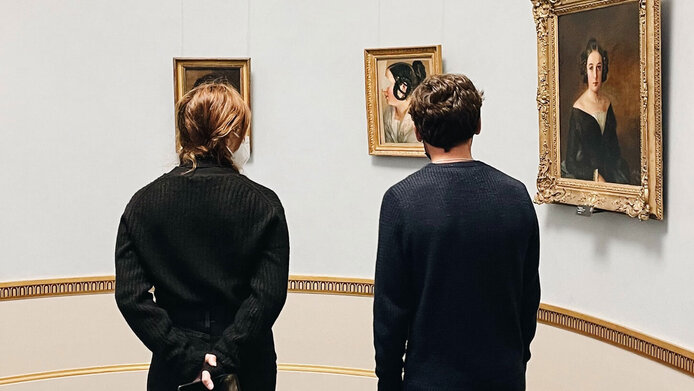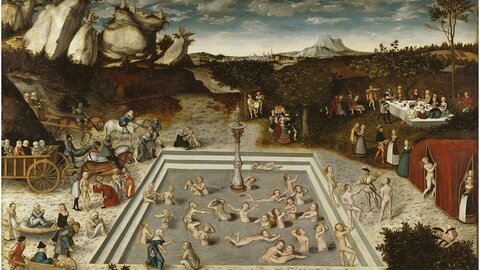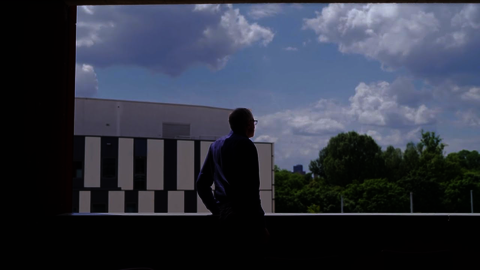Art criticism in the era of social media

At school, there are mainly two ways of dealing with art: either one actively produces artwork, or one studies the history of art. But art education can be so much more, says Iris Laner, professor of fine arts and art education at the Mozarteum in Salzburg, and this view is corroborated by history. In antiquity, aesthetic education was still considered the foundation for understanding the world: exploring specifically the fictional world of myths and art necessarily had to come before looking for truth in the real world. Many also considered the strong emotional power of the arts to be dangerous – this is why Plato was an advocate of strict censorship.
Better use of social media
Instead of restricting access to media, Laner would prefer exploring the potential of a responsible and critical approach to the power of images. She is convinced that visual education can achieve more than just passing on a lofty love of art: “Comprehensive aesthetic education can help us to better find our way in the world.”
Learning to perceive, classify and understand your own sensory impressions enables you to explain better to yourself and others why something affects you, and what defines your own approach to images. This is not an insignificant skill given the flood of images in today’s world, especially since we are talking about subjective perception. Unlike thematic debates, there is no right or wrong fact-based answer as to whether an image is beautiful, moving or impressive. Everyone can come to their own conclusions, but they can also learn to understand diverging opinions.
We won’t have anything “museum-like” in our home
In the FWF-funded project “Aesthetic Practice and the Critical Faculty: Examining the Educational Conditions of Aesthetic Experience” principal investigator Laner is exploring how 14-year-olds from different educational backgrounds analyse and discuss images, how they deal with aesthetic artefacts, and how they form opinions about them. The students were asked for instance to discuss their impressions of three different portraits in focus group interviews. It turned out that they liked to use familiar stock phrases but also words that they themselves coined in order to express complex concepts.
“Museumisch”, a self-coined term meaning “like in a museum”, was often used to explain why they would not really like to hang a certain picture in their home: “The youngsters used this term in a rather denigrating way – it often meant they wouldn’t want to explore something any further, thinking ‘it belongs in a museum, not in my world, and therefore I am not interested’,” notes Laner in explaining the preliminary results of the basic research project, which is set to run until the end of the year.
Language shapes prevailing opinion
The language used by the young people was subject to certain trends. Once a term came up, it was usually taken up and used by the group. The discussion often focused for a long time on a topic that was introduced at the beginning – whether the person portrayed was female or male, for instance – and the conversation then continued along these lines. Verbal utterances guided the group’s attention and assessments, but it is not always easy to translate an impression or feeling into words. Language was therefore not the only way for the students to reveal their opinions.
Laner observed that body language was often a better indicator of whether someone disagreed with the prevailing opinion. She and her team recorded such moments in observation protocols. For example the instance when a girl turned away from the group and then muttered to herself that not everyone thought that the “gangster” on the portrait was so very cool.
Using the results in the classroom
“It is easier for students to express divergent opinions in a non-verbal way. That happens on a different level and thus also disrupts habitual response patterns,” notes Laner. Hence, teachers could start to promote different forms of expression in the classroom: allowing technical language, everyday language, but also images and gestures, and establish all of these as equal in order to react to the impressions images make on the students.
In a follow-up project, Laner intends to investigate how this could work in practice. It is not only about honing critical faculties, but also about the willingness to be inspired to think and feel: “If art has anything to contribute, it is the ability to open up spaces for thinking and feeling, and these spaces should be available to all children and adults,” says Laner. At the moment, many young people still feel that there is quite a distance between art and everyday culture.
Personal details
Iris Laner studied philosophy and art education at the University of Vienna and completed her doctorate on “Image and Time” at the University of Basel. She completed research visits at the University of St. Gallen, the KU Leuven, the University of Tübingen and at the Academy of Fine Arts in Vienna. Since 2019, she has been a professor of art education at the Mozarteum in Salzburg. The project “Aesthetic Practice and the Critical Faculty” (2017–2022) is receiving roughly EUR 229,000 in funding from the Austrian Science Fund FWF.
Publications
Iris Laner: Ästhetik, in: Milena Feldmann, Markus Rieger-Ladich, Carlotta Voß, Kai Wortmann (eds.): Schlüsselbegriffe der Allgemeinen Erziehungswissenschaft. Pädagogisches Vokabular in Bewegung, Beltz Juventa 2022
Iris Laner: Dekonstruktion, in: Emmanuel Alloa, Thiemo Breyer, Emanuele Caminada (eds.): Handbuch Phänomenologie, Mohr Siebeck 2022
Iris Laner: French Theory: Poststructuralism and Deconstruction, in: Kresimir Purgar (ed.): The Palgrave Handbook of Image Studies, Palgrave Macmillan 2021
Iris Laner: Sehen in Gemeinschaft. Über Wissen und Erkenntnisse im Zuge gemeinschaftlichen Erfahrens, in: Kunstpädagogische Positionen 54, Hamburg University Press 2021





